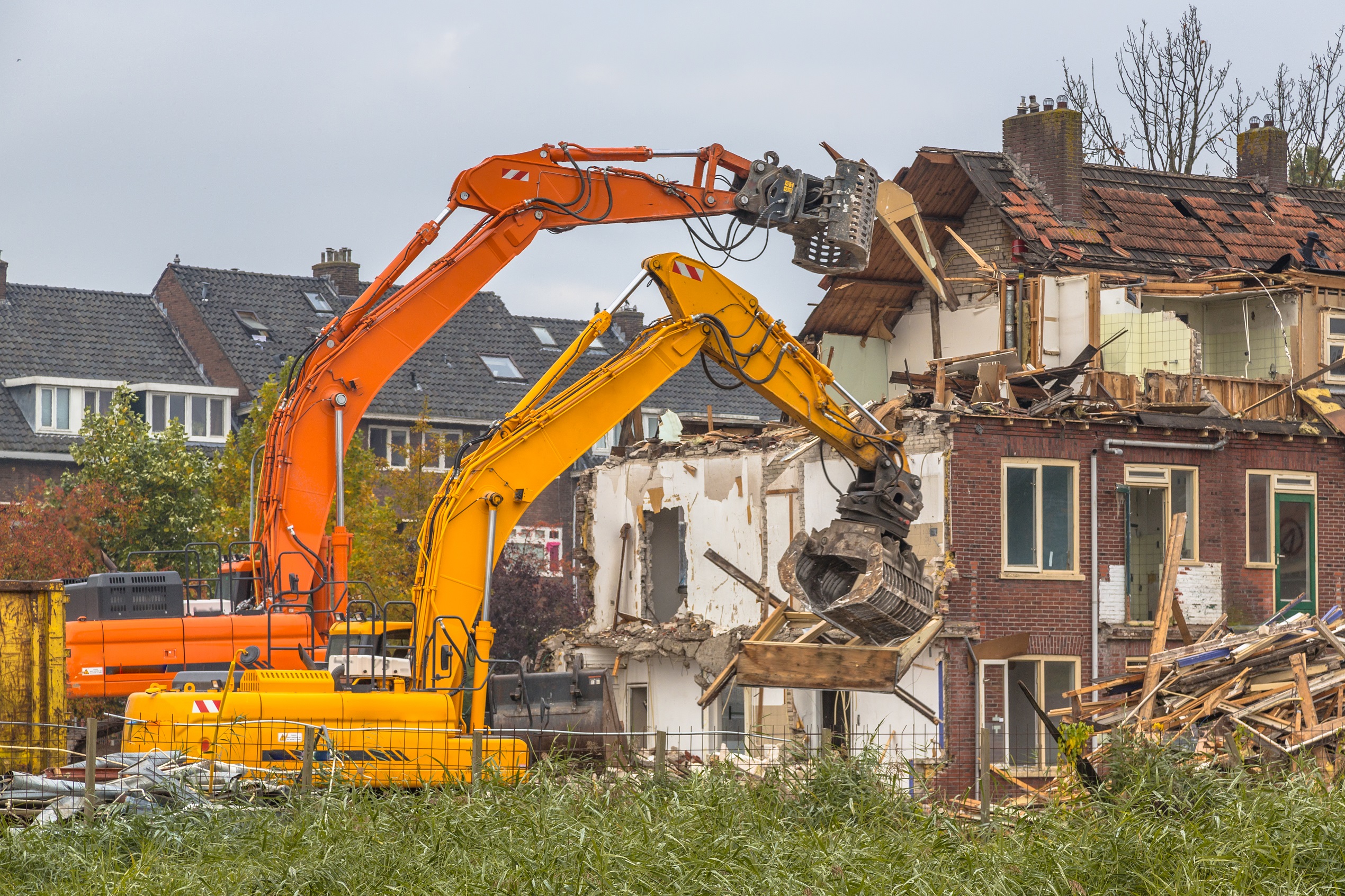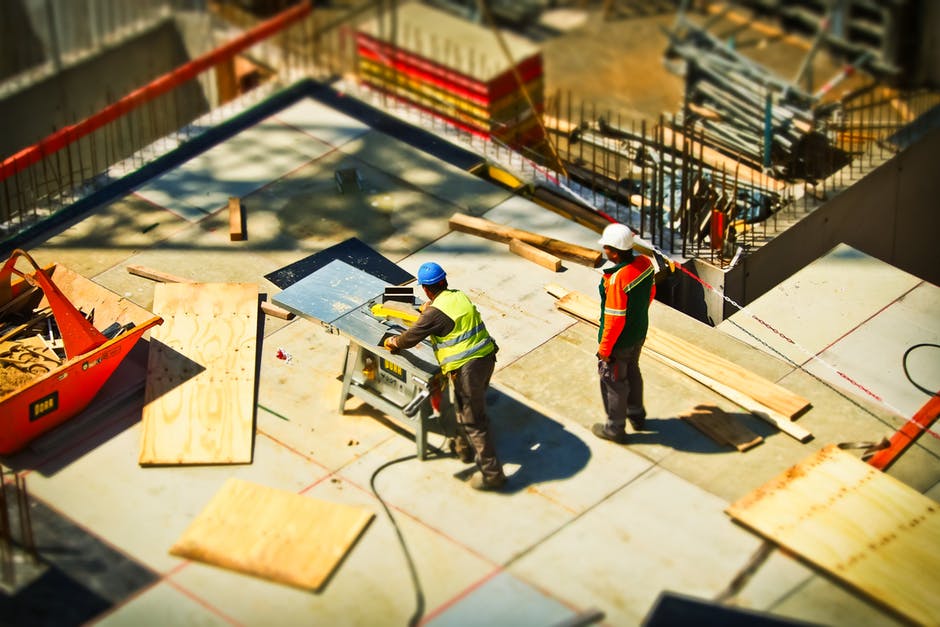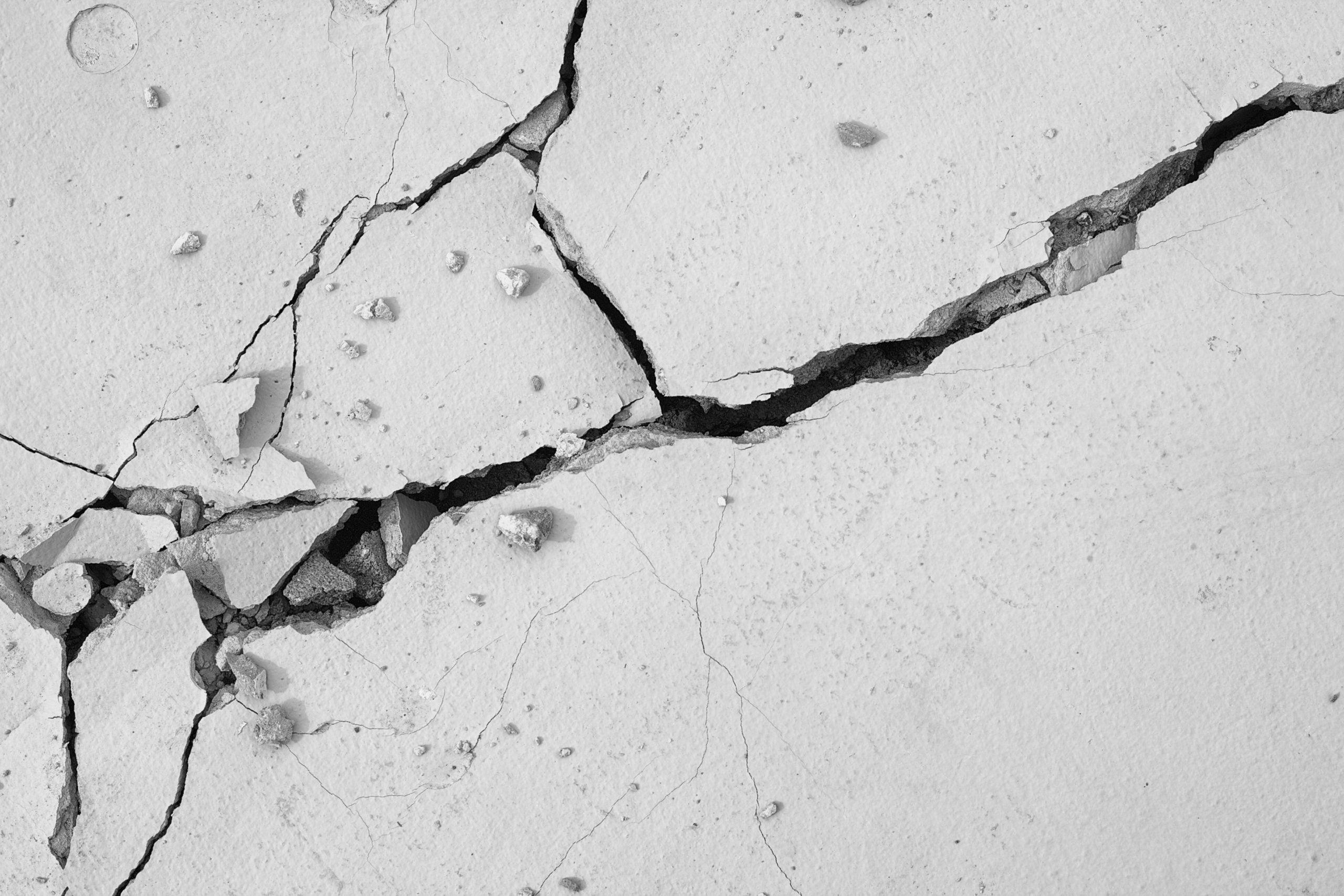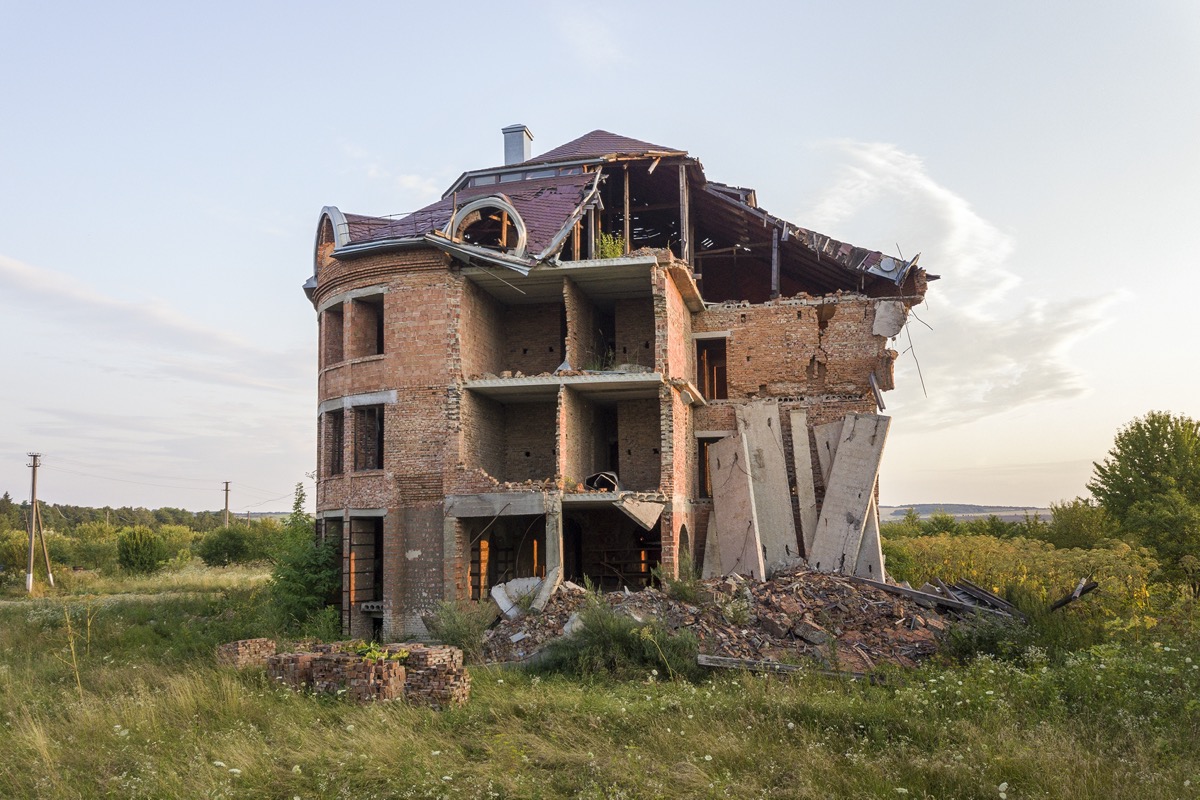Demolition or deconstruction is one of the most dangerous areas of construction. According to a research study for the UK Health and Safety Executive (HSE), 40.6 percent of the overall construction fatalities occur on refurbishment sites. Whereby refurbishment comprises demolition, dismantling, renovation, and restoration works. Adding further to this figure, the German Federal Institute for Occupational Safety and Health BAuA (Bundesanstalt für Arbeitsschutz und Arbeitsmedizin) found, the risk for a fatal accident is 15X higher during demolition work as equated to the remaining construction sector.
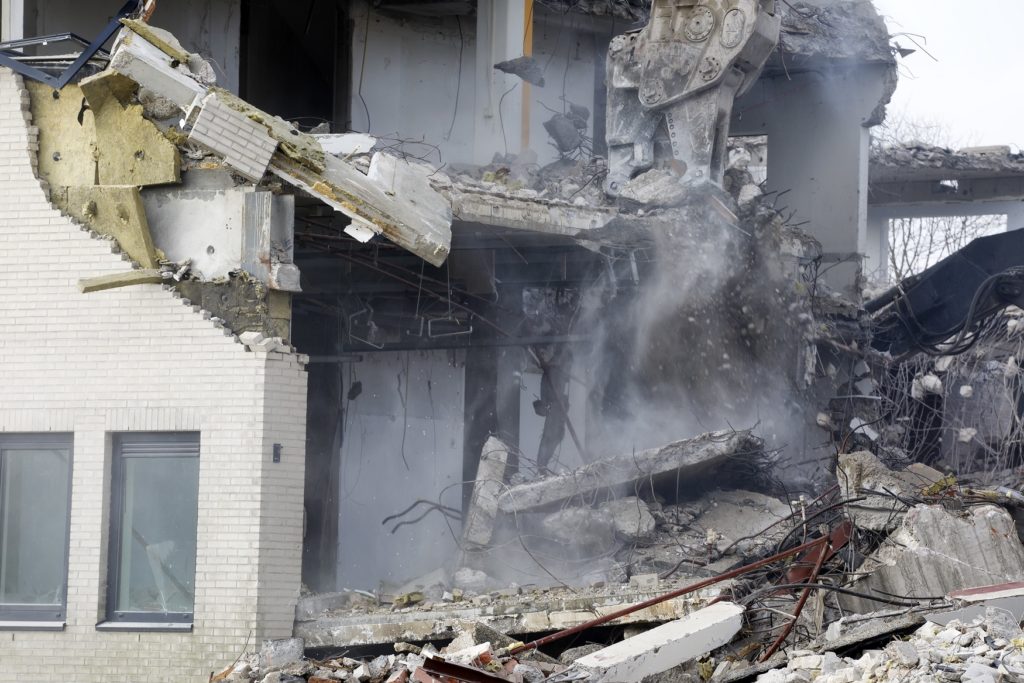
Now you may ask what the possible hazards are? – The hazards during site demolition include:
- Accidental Falls
- Being Struck By Falling Material
- Buried In Falling Material
- Unintentional Collapse Of The Structure
- Noise
- Vibration
- Dust
- Exposure To Hazardous Chemical And Biological Agents
Site demolition/deconstruction is carried out on a building structure which is weakened by, simple wear and tear, or is a result of natural forces like storms, floods, fire, explosions or by simple wear and tear. Also, a building structure can be fully deconstructed, partially deconstructed, or totally demolished. One of the biggest challenges is to plan, organize, and conduct the construction practices in a way that no part of the structure collapses unexpectedly and doesn’t adversely affect the environment and health of the workers and populaces.
This article looks at the typical problems involved in deconstruction and demolition and highlights the importance of implementing green measures in this sector.
Deconstruction/Demolition – The Most Significant Hazards And Risks
Demolition or deconstruction is one of those construction processes which should be planned very carefully. The building structure should be surveyed thoroughly, and information should be collected on the nature of the structure as much as possible. Information like the method of construction and materials available to the demolition contractor are very important to ensure sustainable deconstruction. In addition to this, Asbestos which is very commonly found in buildings and other structures which are planned for demolishing demand contractors/sub-contractors who are experts in handling it.
Identifying the risk associated with deconstruction and demolition is the first step to managing the risk associated with this process. Let us list down few of the general hazards and some specific work-related hazard involved.
General Hazards
- Often there are several parties involved in big demolition work like the client, contractors and specialized sub-contractors (e.g. asbestos removal specialists). And the communication gap is very huge and causes problems. Unclarity on sites put workers on high risk of being hit by objects, falling from a height, getting buried by collapsing elements and many more similar risks.
- The structures which are a part of ongoing demolition or excavation are very unstable, hence can unexpectedly collapse. This puts workers at high risk and tension. Falling objects (small or big parts of the building or tools) can hit or even bury the workers onsite.
- The building structure or the ground can contain highly hazardous agents, like asbestos (linked to causing cancer), wood preservatives, PCBs, mold, dead bodies/excreta of various species like bats, rats, pigeons (bites from bats may cause rabies).
- Accidentally damaging the lines of gas supply, electricity, water, sewerage, fuel and refrigerant in pipes can cause electric shock, burns, fires, etc. if they aren’t cut off properly.
Work-Related Hazards
- Noise and vibration caused by the hand-tools, explosives, machines, and falling/collapsing parts of the building.
- The dust raised up by the demolition work.
- Workers are exposed to high heat and ultraviolet rays from the sun since a great deal of the work needs to be performed in the open.
- Grueling level of manual work and most of them are at elevated levels. This exposes the workers to risk like slips, falls from height, trips, heavy loads, electric hazards, constrained postures, fires, and explosions.
- Explosives used on demolition sites can affect a wide area. If the building does not collapse the way it is planned there are chances that it leaves the building in a condition which is unstable.
- Demolition workers are exposed to agents and conditions which can cause chronic diseases like cancer by asbestos, silica dust, PCBs, dust and ultraviolet rays, and MSD.
With so much on stake, Green and Sustainable Deconstruction become the need of the hour.
What Is Green And Sustainable Deconstruction?
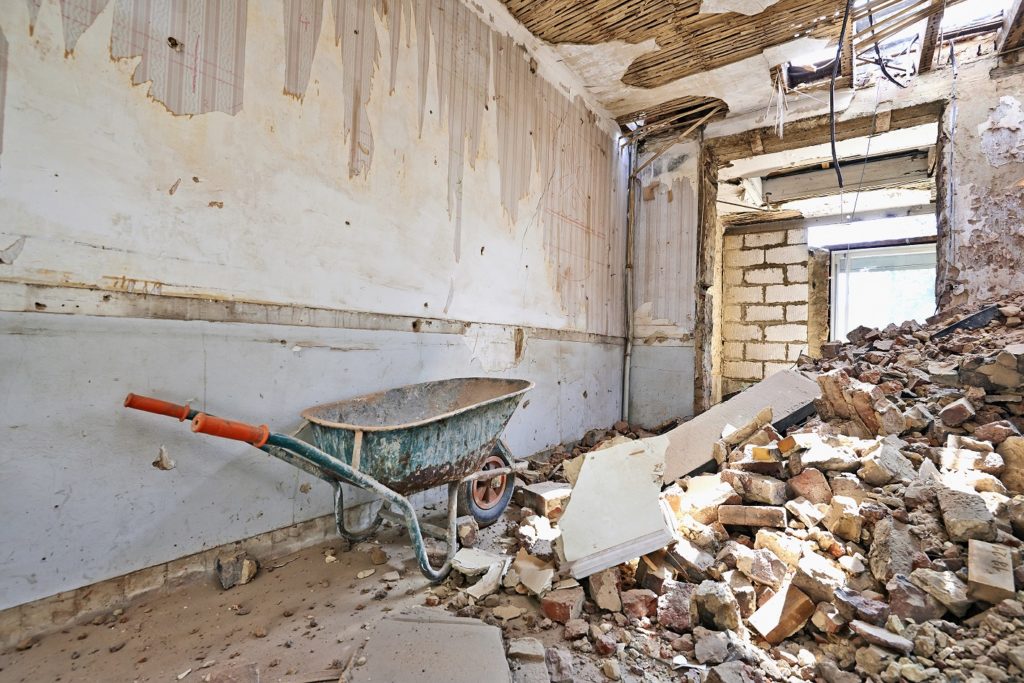
GSD, Green and Sustainable Deconstruction is the practice of bearing in mind environmental, social and economic effects of a building structures demolition into a site redevelopment project. This practice focuses exclusively on the selection and implementation of deconstruction methods which will maximize the environmental benefits of reuse and recycling of construction materials while bidding to minimize costs.
Site deconstruction and decontamination includes the real-time monitoring of waste, management of hazardous waste, and recycling of waste that can be recovered as new resources.
Benefits Of Implementing Green And Sustainable Deconstruction Practices
Demolition materials amount to approximately 90% of the total amount of Construction and Demolition (C&D) material generated while construction only generated 10%. EPA estimates, over 534 million tons of C&D debris was generated in the United States alone in 2014; this was more than 2 times the amount of generated municipal solid waste. (Source)
This offers a weighty incentive to consider green deconstruction methods which will at the end maximize reuse and recycling as part of your restoration project. Here are few benefits of implementing Green and Sustainable deconstruction practices.
- Dīpālpur Minimizing Waste
Traditional demolition projects depending on the type of structures being demolished reuse or recycle only about 15-20 % of all demolition materials. Green deconstruction practices aim at identifying and establishing measurable metrics which enhance reuse and recycling of demolition materials, thus, minimizing waste generation.
- troublesomely Maximize Reuse and Recycling
Green and sustainable deconstruction projects enhance the potential of reusing by introducing best management practices goals for reuse and recycling early in the planning process. This allows adequate time to survey buildings and sites and spot local reuse partners in advance of planned deconstruction projects.
- Environmental Impact Reduction
Proper planning minimizes the overall environmental impact of the project by helping condense fugitive dust emissions, greenhouse gas emissions, water quality degradation, water use, and erosion and sedimentation while preserving our ever-dwindling landfill space.
Reuse and recycling of building materials from demolished or deconstructed sites can save money and preserve natural resources. Practically all buildings have a good amount of reusable materials, but what’s most important is – EARLY PLANNING. With adequate time, proper knowledge, and a team of trained advisors and contractors, anyone considering renovation or demolition can choose the path of Green deconstruction.
Green and sustainable deconstruction proved that Green Building is not just about design and construction, but it’s for the for every phase in construction – with one single aim i.e. Change the world into a better place!
For expert advice, drop a word at our email id gosmartbricks@gmail.com

You May Like:
Waste management – How Recycling Construction Materials Are Benefitting The Environment?
20 Toxic Construction Chemicals Found In Building Construction


